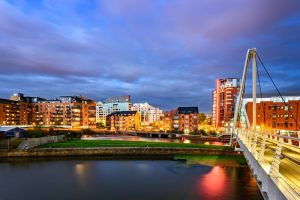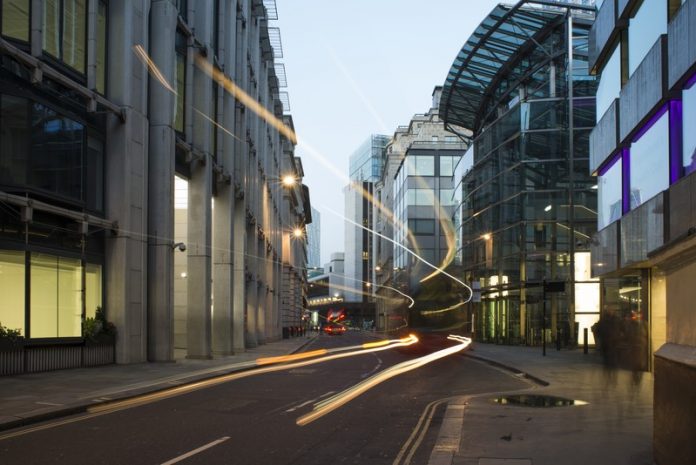Hiro Aso and Ian Mulcahey from global architecture and design practice Gensler share their thoughts on London’s unprecedented growth
As birth rates continue to accelerate, citizens are living longer and more and more people still look to move to the capital for work. If we continue to grow at this pace, we’ll hit 10m people before 2030 – a figure that brings many challenges. We require places to live that correspond with our way of life. We need housing, workspace, local services and infrastructure.
Aso leads the firm’s transport and infrastructure projects, and was recently chosen by the mayor of London, Sadiq Khan, as one of his 50 Design Advocates to help support his Good Growth by Design programme.
The initiative sets out an integrated growth programme of work that seeks to enhance the design of buildings, spaces and neighbourhoods for all Londoners by drawing together existing design and place-shaping expertise, and using the skills of the advocates and the built environment sector as a whole.
Having worked over different geographies in the course of his career, Aso thinks it is evident that the success of good place-making runs deeper than having progressive ideas, but rather, it is rooted in the fundamentals of sound governance. Having closer, more creative collaboration between government and the real estate industry leads to better placemaking.
If you look at some of the best examples of placemaking around the world, the key element is governance. Look at Copenhagen, for instance. Its municipal government is powerful and that enhances the city’s ability to ake strategic decisions that span decades and mayoral terms. The capacity of the public sector is strengthened by an educated workforce with deep technical knowledge. And collaboration across political parties, levels of government and sectors of society is common and consistent. By using an approach of intelligent, human-centric urban planning, Copenhagen has created a city that its people are proud of.
 A shift to the Northern Powerhouse
A shift to the Northern Powerhouse
For many years, London and the South East have been the focus of many of the UK’s conversations around the economy. However, in the short time since the first mention of the Northern Powerhouse proposal, there’s been a tangible shift towards support for the core regions of the North – including the cities of Liverpool, Manchester, Leeds, Sheffield and Hull.
This year is set to be the “year of the regions”, with the government placing the North’s growth programme at the core of its agenda. The wheels are already in motion. In January, Prime Minister Theresa May released an industrial strategy green paper pledging a boost of £556m for the Northern Powerhouse for major new infrastructure investment, outlining the creation of a world-class transport system linking the cities and towns of the North to revitalise its economy.
In Leeds, York and Manchester, Gensler has seen first-hand that when foreign investors look to the Northern Powerhouse, they are not only interested in investing in a city with genuine potential to grow, but also cities that embrace the essential elements of a vibrant community – connected, resilient, inspiring and healthy. Social connectivity along with transportation connectivity needs to be of equal standing in a city’s infrastructural agenda, producing resilient cities that are inspiring and healthy for all.
Leeds
Gensler’s work as the primary architect on the Leeds Station Masterplan demonstrates how infrastructure can fuse historic identity with a future vision to create unique and dynamic places. Gensler’s masterplan must help the city meet its ambitions to make the station a key national landmark and a pivotal driver of regeneration and commerce for the city and region. This vision is shared by all key stakeholders involved in the project, namely Transport for the North, Northern Powerhouse Railway, HS2, Department for Transport (DfL), London Continental Railways, West Yorkshire Combined Authority and Leeds City Council.
Delivering for a community must not come down solely to constructing anew. It’s also about taking a hard look at our existing systems and structures, and giving our rich heritage a renewed context. We are excited to be part of such a transformative story.
By stitching together the city’s disconnected north and south through robust urban strategies that are resilient, connected, healthy and emotionally rich and inspiring, we hope to unlock Leeds as a vibrant capital and one of the key pillars of the Northern Powerhouse.
Investment in the Midlands
The population of the West Midlands is growing fast. It will require around 165,000 new homes over the next 15 years to keep up with demand. But in the pursuit to meet this demand, developers and local authorities must appreciate that the onus should be on creating communities, not just building houses. You can’t have strong, stable economies without having strong, stable communities – the two are inextricably linked.
London and the South East have, for many years, been the focus of the nation’s conversations around economic development and prosperity. The Northern Powerhouse and the Midlands Engine are emblematic of the enormous interest in the economic and human potential of the UK regions. The rise of global investment interest and the ever-faster transformation of manufacturing as digital technology permeates every level of the supply chain are transforming Birmingham and the West Midlands.
The West Midlands has a solid opportunity now to rethink its brand and cultural offering, not just on a UK-wide scale, but internationally. It’s a place steeped in heritage, with buzz and individuality and a real diversity of space. The challenge now is how it capitalises on these traits to create appeal. The wellbeing and satisfaction of its citizens and visitors will be strongly influenced by this.
Thus, its branding must be concerned with how its culture and history, economic growth, social development, infrastructure, architecture, landscape and environment, among other things, can be combined into a saleable identity that is acceptable to all. There are a number of other challenges that must be addressed, too. The region needs to ensure it has a ‘jobs rich’ industrial strategy and that it prioritises support for disadvantaged groups.
As well as capitalising on its strong manufacturing base, it should look to expand into areas such as high-value services like insurance and financial services. It’s vital that the West Midlands utilises the ‘human goldmine’ of its large student population. Improving its graduate retention rates by attracting knowledge jobs to the region would boost productivity and create spill-over benefits for local non-graduates.
When addressed together, these challenges will help push the West Midlands to share in the country’s prosperity and enable its citizens to thrive across their lifespan.
Hiro Aso
Transport and Infrastructure Practice Area Lead
Ian Mulcahey
Managing Director
Gensler
Twitter: @gensleruk
Instagram: gensler_uk
Youtube: GenslerTV














